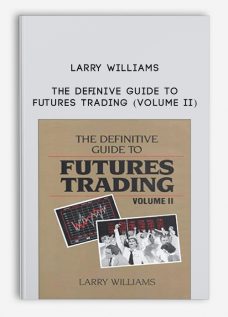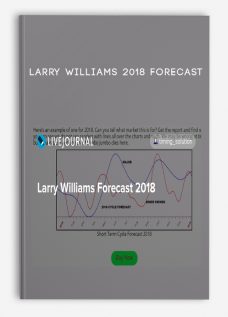Larry Williams – Accumulation & Distribution
$9.00
- Description
Description

Larry Williams – Accumulation & Distribution
The Williams’ accumulation/distribution indicator can be used to measure buying and selling pressure within the financial markets. The use of this momentum oscillator can help you determine appropriate times for entering or exiting a specific market position.
Security: WMT
Position: N/A
| The Williams’ accumulation/distribution (WAD) indicator is a momentum oscillator that measures buying and selling pressures. Accumulation refers to a rising market, with increased buying pressure meaning the buyer is in control. Conversely, distribution is associated with declining markets and selling pressure with the sellers in control. This indicator is one of many developed by technical analyst, Larry Williams. Unlike many of the other accumulation/distribution indicators, such as on-balance volume and the Chaikin oscillator, the WAD doesn’t factor in volume. If you do want to include volume data when using this indicator, some software packages have a volume-weighted WAD.Calculating the Williams’ accumulation/distribution value begins with determining the true range high (TRH) and true range low (TRL):TRH = Yesterday’s close or today’s high, whichever is greater TRL = Yesterday’s close or today’s low, whichever is greaterThen, determine the WAD value for today:If today’s closing price is greater than yesterday’s closing price, Today’s WAD = Today’s close – TRL Otherwise, if today’s closing price is less than yesterday’s closing price, Today’s WAD = Today’s close – TRH Otherwise, if today’s closing price is equal to yesterday’s closing price, Today’s WAD = 0The final cumulative value can then be calculated for the WAD:WAD = Today’s WAD + Yesterday’s WAD |
| Buy and sell signals will occur when there is divergence between price data and the WAD indicator. For example, if a security’s price is setting a new high and the WAD indicator is not setting a new high, then a sell signal will be generated. If a security’s price is setting a new low and the WAD indicator does not correspond with its own low, then a buy signal is generated. |
| Figure 1: Daily price chart for Wal-Mart Stores, Inc. plotted with the Williams accumulation/distribution indicator. |
| Graphic provided by: TradeStation. |
| Once a buy or sell signal is created with the WAD line, it is a good idea to wait for a confirmation of that signal. One fairly easy method for doing this would be to draw a trendline on the WAD. Once this trendline is broken, the signal will be confirmed and you can enter a market position with greater confidence. |
| In the daily price chart for Wal-Mart Stores, Inc. [WMT], a sell signal is created at the arrow labeled 1. At this point, the price has reached a new high, while the WAD line has not. Since the upward trend (line AB) has just been broken to the downside, this would signify an excellent point for exiting a long position or entering a short position. The opposite situation develops at the arrow labeled 2. Here, the price chart has made a new low but the WAD line has not. This divergence signals a buy opportunity. When the WAD line breaks above the downward trendline (line CD) the buy position is confirmed. |
Get Larry Williams – Accumulation & Distribution on bestoftrader.com
Larry Williams – Accumulation & Distribution Download, Accumulation & Distribution Download, Accumulation & Distribution Groupbuy, Accumulation & Distribution Free, Accumulation & Distribution Torrent, Accumulation & Distribution Course Download, Larry Williams – Accumulation & Distribution Review, Accumulation & Distribution Review















